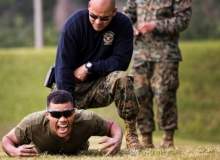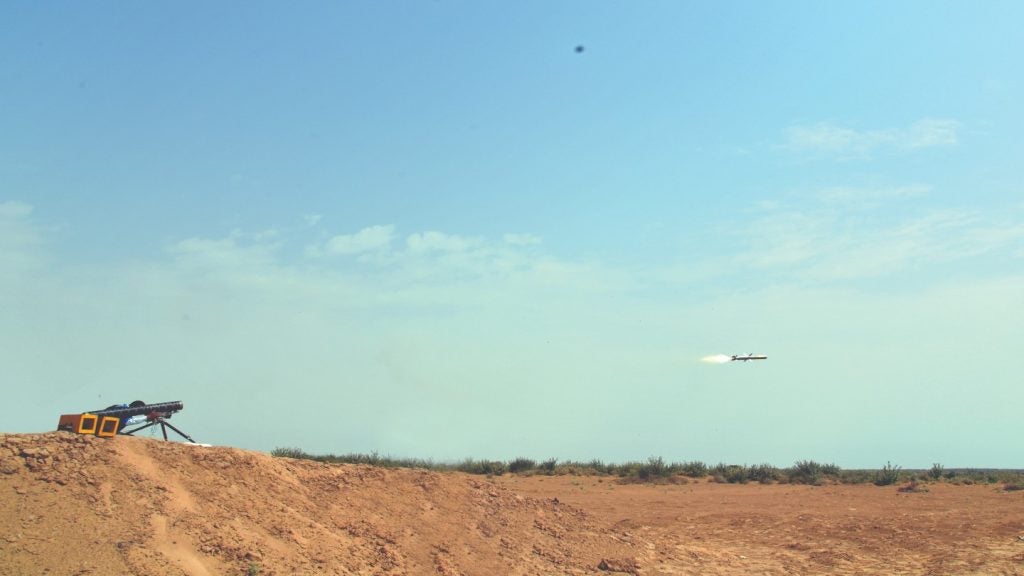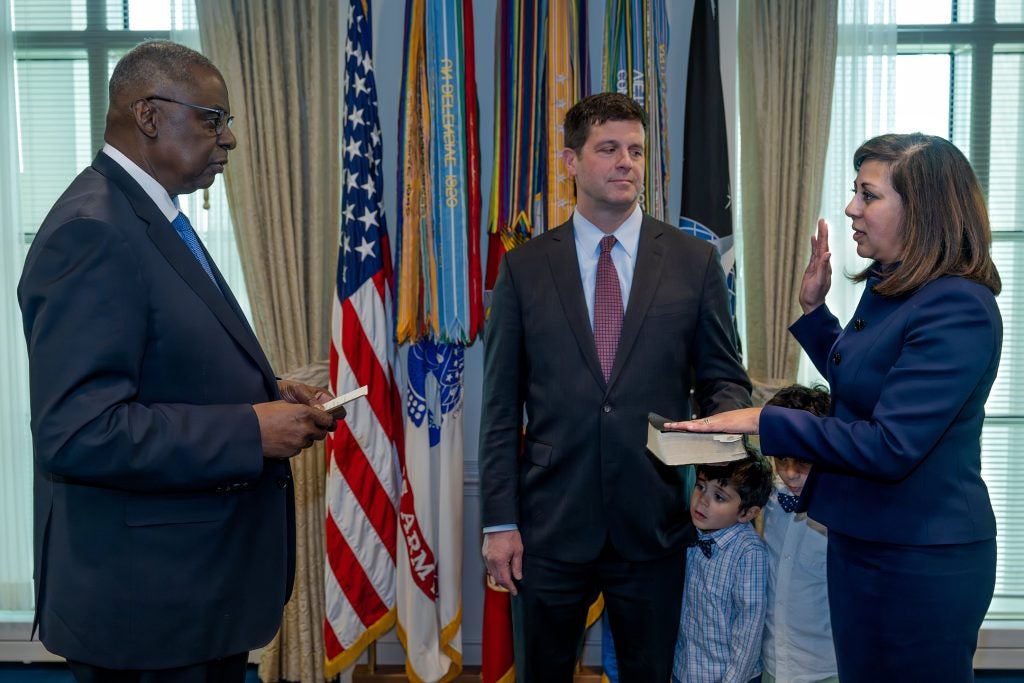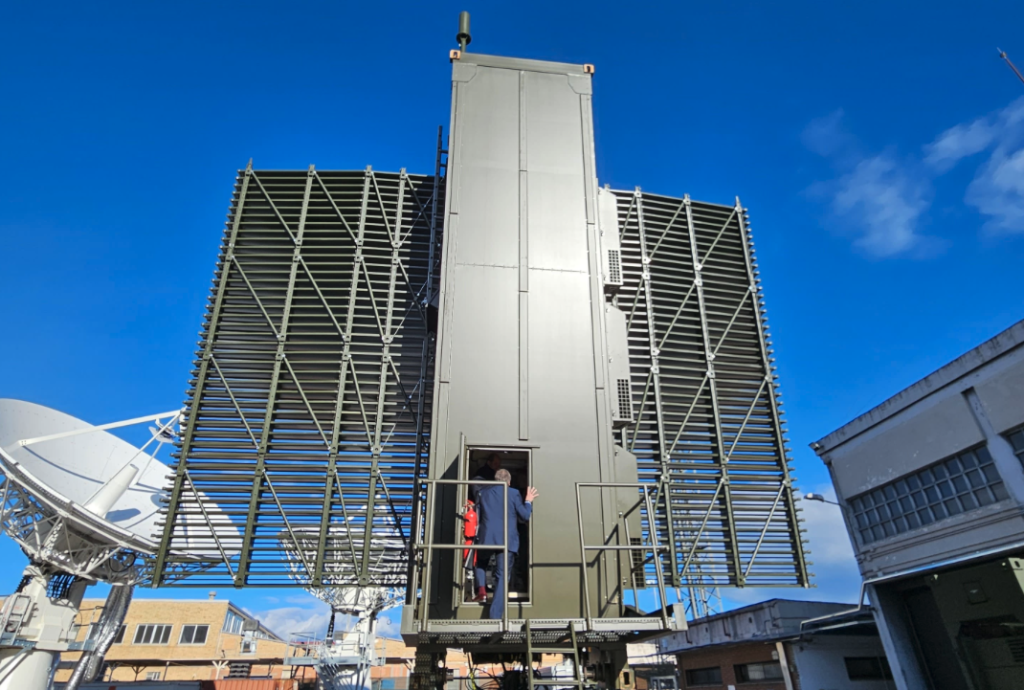

From potent pepper spray to low-energy dazzling lasers, armed forces around the world are increasingly looking to non-lethal weapons to reduce the devastating effects of using traditional munitions. Non-lethal weapons can be utilised in a range of scenarios but, importantly, they rarely cause long-lasting injuries or damage to property. That’s vital for ‘hearts and minds’ operations, where support from the local population is paramount.
While non-lethal weapons are not being billed as a replacement for lethal force, they are seen as a way of giving commanders more escalation options in dangerous situations. They can be deployed to multiple types of theatre – across the spectrum of conflict – for both force protection and force application.
"Non-lethal weapons, munitions and devices are employed in conjunction with lethal capabilities to enable immediate, precise and proportionate force application across a myriad of scenarios for short-of-lethal response," says Kelley Hughes, a spokesperson at the Pentagon’s Joint Non-Lethal Weapons Directorate. "Non-lethals demonstrate our intent to protect civilians to local populace, allies/partners, and domestic/international audiences."
Meet the ‘pain ray’
Interest in non-lethal weapons is growing and that trend is reflected in several new technologies which are being developed for the US military. The US Marine Corps has fielded optical distraction devices, otherwise known as dazzling lasers. Another effective non-lethal weapon deployed across the military and law enforcement is the acoustic hailing device, which can send out clear voice messages and, if needed, disperse a crowd with a pain-inducing tone.
See Also:
One potentially ground-breaking non-lethal technology is the area denial system (ADS), a directed energy platform which resembles a large radar dish attached to the roof of a Humvee vehicle. It’s been given the nicknames ‘heat ray’ and ‘pain ray’ because when directed at people it gives an "intolerable heating sensation". Videos of the ADS in action show a large crowd of people quickly dispersing once the ADS is switched on.
How well do you really know your competitors?
Access the most comprehensive Company Profiles on the market, powered by GlobalData. Save hours of research. Gain competitive edge.

Thank you!
Your download email will arrive shortly
Not ready to buy yet? Download a free sample
We are confident about the unique quality of our Company Profiles. However, we want you to make the most beneficial decision for your business, so we offer a free sample that you can download by submitting the below form
By GlobalDataBody-worn health monitoring systems measure physiological signals in real time to track individuals’ physical condition and performance.
It might sound like a Bond villain’s new toy but developers are quick to point out that the ‘heat ray’ is safe. It works similar to a microwave, shooting out a beam of millimetre waves at exactly 95Ghz, which excites water and fat molecules on the skin. Humans won’t stay in the target beam for long, so long-term exposure is not generally a factor.
The system has shown its effectiveness in situations such as crowd control and other scenarios. It was even deployed to Afghanistan in 2010 but never used operationally. Last year, an ADS was mounted on board a US Army landing craft to test its potential use in maritime environments, the first time in its 15-year development. At the time, US Marine Corps commandant General James Amos said he was pleased with ADS’s development and its potential role in future conflicts.
Amos is the executive agent of the Department of Defense’s Non-Lethal Weapons Program, which aims to provide "escalation-of-force options that minimise casualties and collateral damage". In his role as executive agent, Amos coordinates non-lethal weapons requirements of all the US armed services and allocates resources to help meet requirements. The Non-Lethal Weapons Program funds science and technology, research and development, as well as the testing and evaluation of non-lethal weapons.
Experiencing first-hand the effects of non-lethal weapons
With non-lethal weapons gaining greater prominence in the armed forces, there’s an increasing requirement to train service personnel on this equipment for future combat scenarios. And unlike ordinary weapons, training on non-lethal weapons often means experiencing first-hand the effects of the equipment. Soldiers gain a greater appreciation of the level of force they are employing, something which law enforcement agencies have done for a number of years.
So if you’re training to use pepper spray or a Taser gun, part of the course will involve getting a face full of pepper spray or a painful shock from a Taser. Marines from 3rd Battalion, 5th Marines and 2nd Battalion, 11th Marines found this out when they trained with non-lethal weapons earlier this year before deploying with the 31st Marine Expeditionary Unit. It’s a week-long package which includes riot training, firing non-lethal munitions and, finally, being sprayed with Oleoresin Capsicum (OC) spray or shot with a Taser.
"Getting OC sprayed was one of the most miserable experiences I’ve ever encountered. I don’t even know how to describe it," said one marine after his training.
That is echoed many times over by soldiers, but, like any other system in the military, training translates into greater proficiency, readiness and confidence in the capabilities when using them. Non-lethal weapons are no different and the military puts great emphasis on training and giving soldiers the most realistic experience possible.
"To promote judicious non-lethal weapons usage, US military personnel authorised to employ them should understand and be sensitive to their effects by experiencing selected non-lethal weapons first-hand in training environments – a common law enforcement standard operating procedure," says Major Jason V. Sama, Requirements & Education Officer at the Joint Non-Lethal Weapons Directorate.
The US Army is even looking at ways to integrate non-lethal weapon training into its Dismounted Soldier Training System – an immersive simulator used to train soldiers in various scenarios. Soldiers could enhance their escalation of force skills by choosing to use non-lethal munitions such as the M1012 and M1013 shotgun rounds or M1106 and M1029 40-mm rounds. A replica of the Taser X26 is also planned so soldiers can simulate the use of conducted energy weapons.
Despite the emphasis being on ‘non-lethal’, safety is still a huge priority for the developers and users of such weaponry. When you’re working with powerful energy weapons, lasers and munitions, it’s important to thoroughly examine their effects and ensure they don’t cross into lethal territory. The Pentagon works closely with academic institutions to develop and test state-of-the-art non-lethal weapons. Much like other defence programmes, academic institutions serve as the seed for new concepts which can eventually be elevated to high technology readiness levels and transition into government laboratories.
Researching the effects on the human body
At Pennsylvania State University’s Applied Research Laboratory the Institute for Non-Lethal Defense Technologies (INLDT) supports the Department of Defense’s Non-Lethal Weapons Program by providing on-site and campus-based technical expertise. INLDT is currently conducting research into a number of future systems including human electro-muscular interruption injury mechanisms and next-generation hail and warn technology.
British soldiers could soon be donning the Oculus Rift virtual reality headset to train for medical emergencies on the battlefield.
Two important roles for the INLDT are conducting technical assessments of the Pentagon’s non-lethal weapons and also assessing the effects of equipment on the human body. It’s usually through recommendations from INLDT experts that non-lethal weapon programmes can advance further or go back to the drawing board. New technology – and existing technology – also has to comply with both domestic and international law before it is used against human subjects.
An essential part of non-lethal weapons development is a thorough understanding of each non-lethal human effect, says Major Sama.
"Within the Department of Defense Non-Lethal Weapons Program, the Joint Non-Lethal Weapons Directorate and the services fund science and technology, research and development, as well as test and evaluation of non-lethal weapons. This knowledge, coupled with strict adherence to DoD training regulations and standard operation helps to ensure the health and safety of all service members – our top priority – when training with non-lethal weapons," he explains.
Despite this thorough work, there is still a concern among members of the public that non-lethal weapons such as dazzling lasers, Tasers and energy weapons could be dangerous. Companies such as Taser are keen to emphasise the safety of their products but several incidents have led to a growing concern over their use. In 2012, Amnesty International said the death toll from stun gun-related incidents in the US had topped 500.
Non-lethal weapons are not a perfect solution, but they provide soldiers and law enforcement officers with more options in challenging scenarios such as riot control or disaster relief operations. The collaborative work of the DoD’s Non-Lethal Weapons Program and academic partners will undoubtedly mean more innovations in the future and will hopefully reduce the need to use lethal weaponry.
Follow Grant Turnbull on Google+


.gif)




